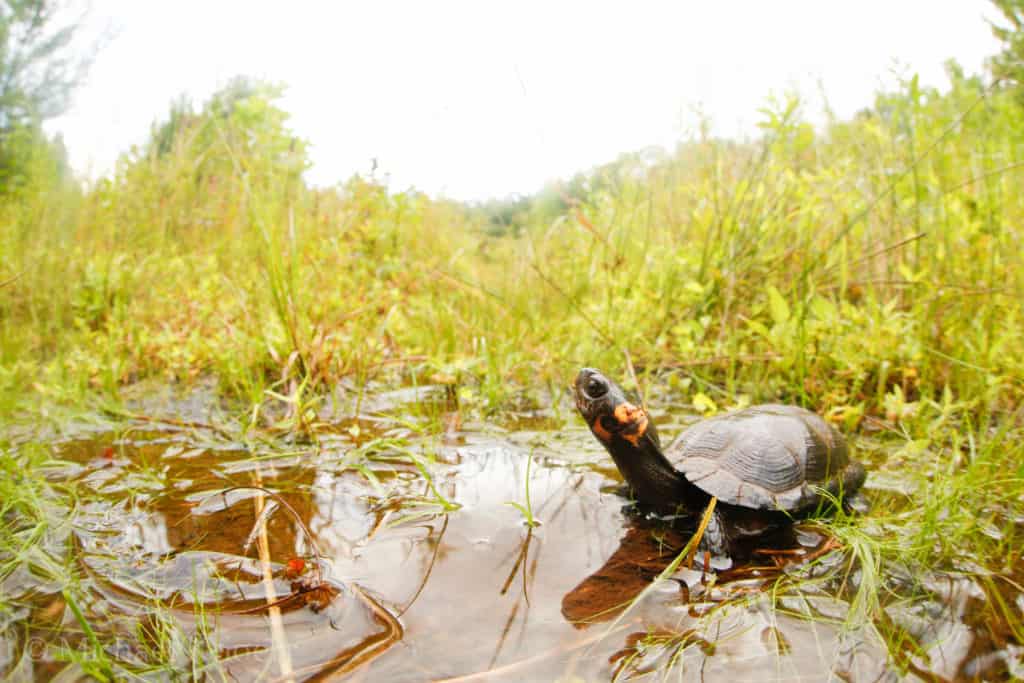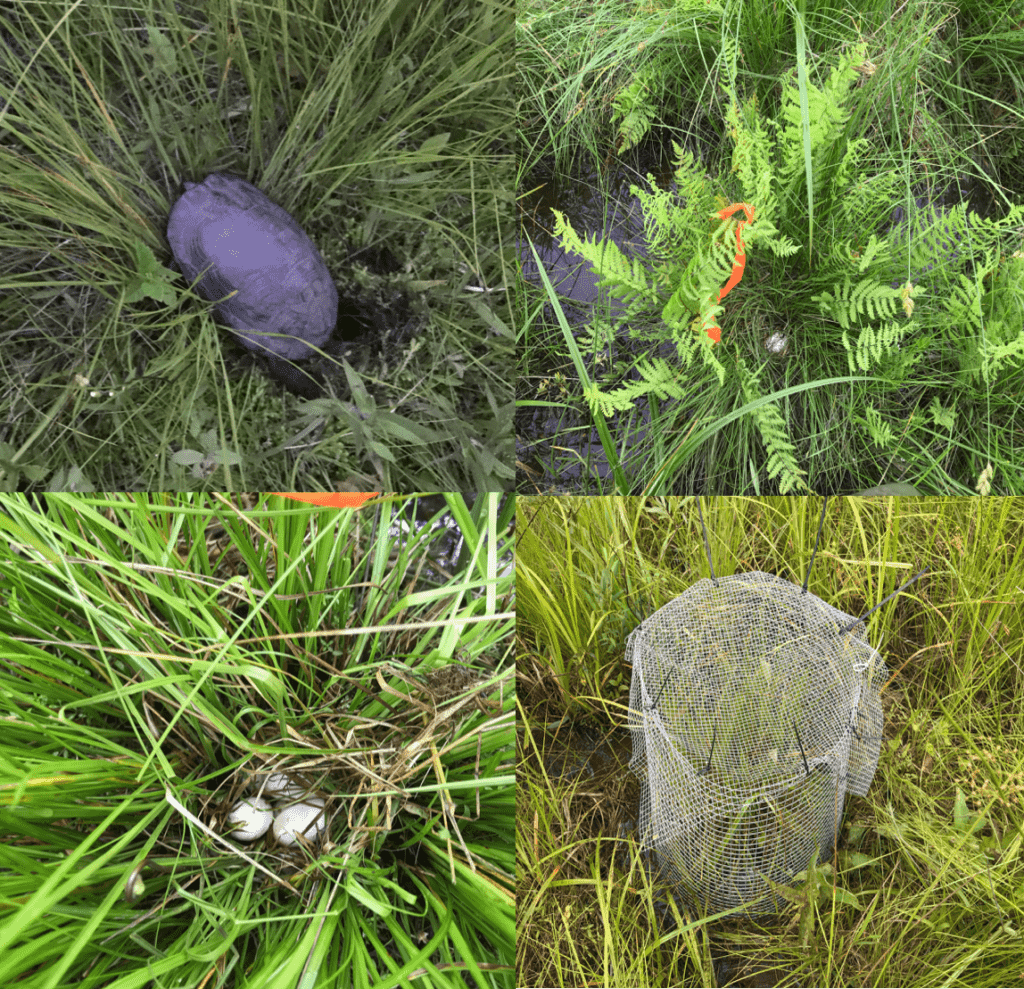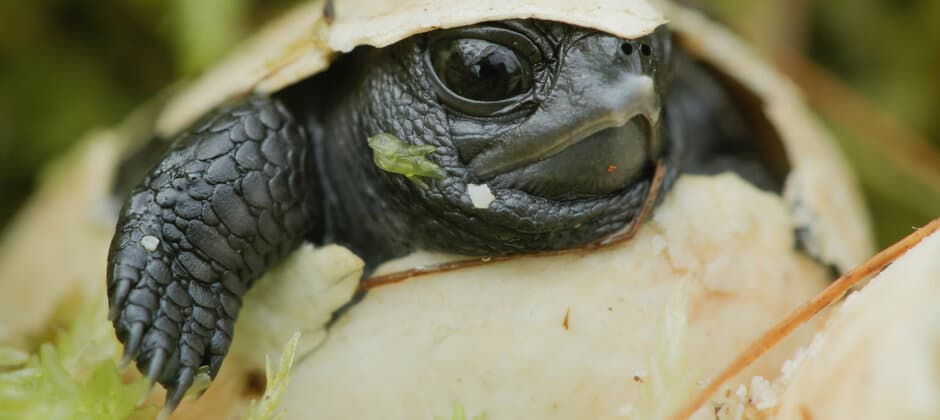Share this article
JWM: Predators overharvesting bog turtle eggs
Predators are stopping many bog turtle eggs from hatching and growing to adulthood.
The bog turtle is the smallest turtle in the U.S., measuring only about three to four inches from head to tail. In the southern portion of the species range, these reptiles mostly live in mountain bogs in the Appalachian valleys, but these areas have been frequently drained for agriculture and development. Increased amounts of nutrients in these open-canopy wetland systems has sped up rates of succession and turned them into forested wetlands, which is unsuitable for bog turtles. Meanwhile, animals like beavers (Castor canadensis) that used to help create and maintain these ecosystems for them aren’t as common anymore.
“Those habitats are few and far between,” said Michael Knoerr, a private land biologist at the Virginia Polytechnic Institute and State University.
As a result of these challenges, the turtles are listed as threatened under the federal Endangered Species Act.
There are two main populations of bog turtles — the northeastern bog turtles, which is found from roughly Massachusetts to northern Virginia, and the southeastern bog turtles found from southern Virginia down to Georgia. The two populations have a 350-mile gap between them in Virginia.

These reptiles are the smallest turtles in the U.S., measuring only three to four inches.
Credit: Michael Knoerr
Knoerr and his colleagues had noticed poor recruitment in many of the populations they studied. Those populations appear to be dominated by older turtles with few juveniles observed. Two of the populations were different than the others though, with populations made up of about 40% juveniles in recent years. The authors set out to determine what was causing this difference in age structure.
“At many sites, we appear to be losing 10% of adult population every year and not finding juveniles to replace them,” Knoerr said. “It’s really an alarming thing when you’re losing that many adults every year.”
However, researchers knew little about how and where bog turtles nest.
As part of a study published recently in the Journal of Wildlife Management, Knoerr and his colleagues radio-tracked pregnant female bog turtles in May and June, in 2016 and 2017. The researchers would spot the females nesting via radio-telemetry at dusk, and return the next morning to verify nest location and record data. They also attached spools of thread to the backs of their shells to aid find their nests if the nesting event was not witnessed.
At half a dozen sites in North Carolina, they monitored the nests, put up trail cameras, and measured and counted eggs.
The researchers noticed very quickly that there was a huge discrepancy between nest success at different sites. At sites with ample recruitment, the turtles had 60% egg hatching rates and low egg predation.
But the other sites with few juveniles saw just the opposite.
“They were really getting hammered every year by predators,” Knoerr said, adding that predators included striped skunks (Mephitis mephitis), raccoons (Procyon lotor), opossums (Didelphis virginiana), and even mice and shrews.
The researchers also noticed elevation made a difference in bog turtle hatching. In higher elevations where it was colder, eggs in bog turtle nests took much longer to hatch than those in lower elevation areas. “The difference in incubation period was pretty dramatic — from 65 to 100 days depending upon temperature and elevation,” Knoerr said.

Clockwise from top left: A nesting bog turtle female, a nest, an egg clutch and a protective cage to keep predators out. Credit: Michael Knoerr
Extra time in the nests give the eggs more time to get eaten by predators. Faster hatching times also gives young turtles a chance to get more settled before the winter comes.
“Some of the late hatching turtles were emerging from the eggs right when the frost was hitting,” he said.
Wildlife managers are already acting on some of these findings. Now that they know where bog turtles nest, they are working to increase both amount and quality of nesting habitat for them. They’re also putting cages over the nests and protecting nesting areas with electric fences to decrease predator access.
Things have already improved drastically. During their study, one of the populations with few juveniles got severely depredated two years in a row by a skunk. Of 106 eggs laid in that site over the two years, only one hatched. In the years since, over 100 hatchlings have been released from caged nests at this site and hatch rate has improved to about 70%.
“That work is particularly cool because it has direct management implications,” Knoerr said.
This article features research that was published in a TWS peer-reviewed journal. Individual online access to all TWS journal articles is a benefit of membership. Join TWS now to read the latest in wildlife research.
Header Image: A bog turtle hatchling emerges from its egg. Credit: Michael Knoerr








